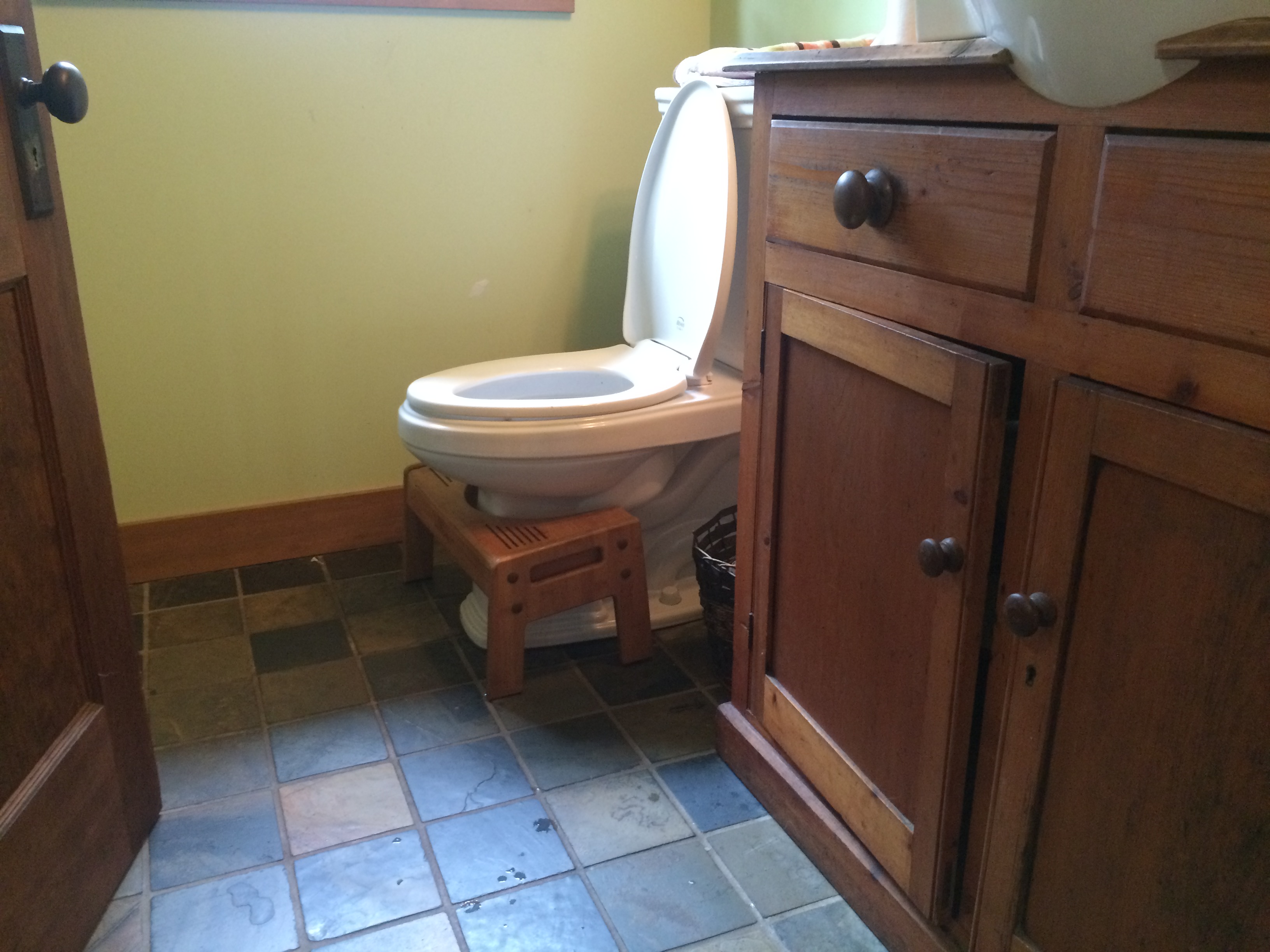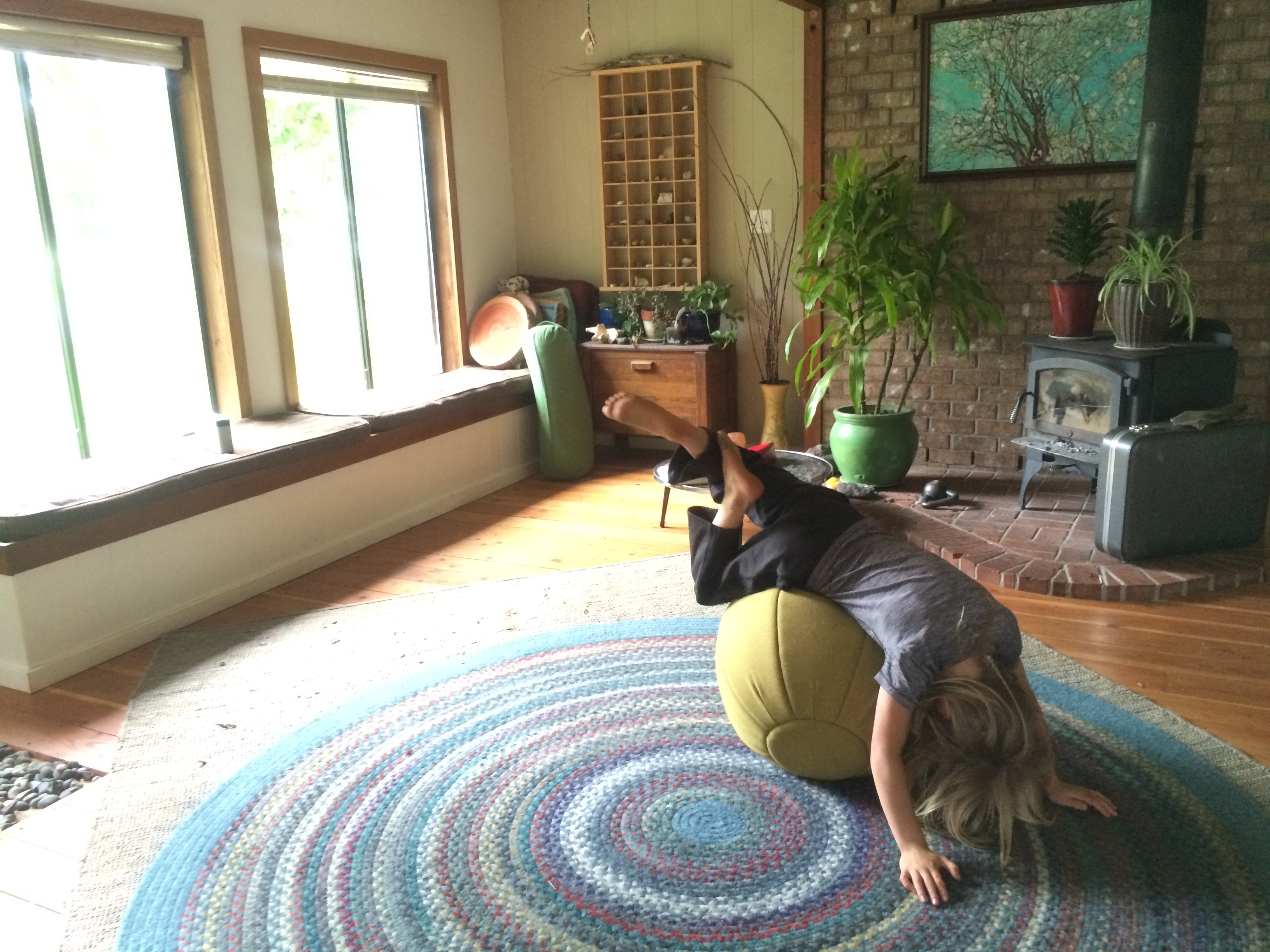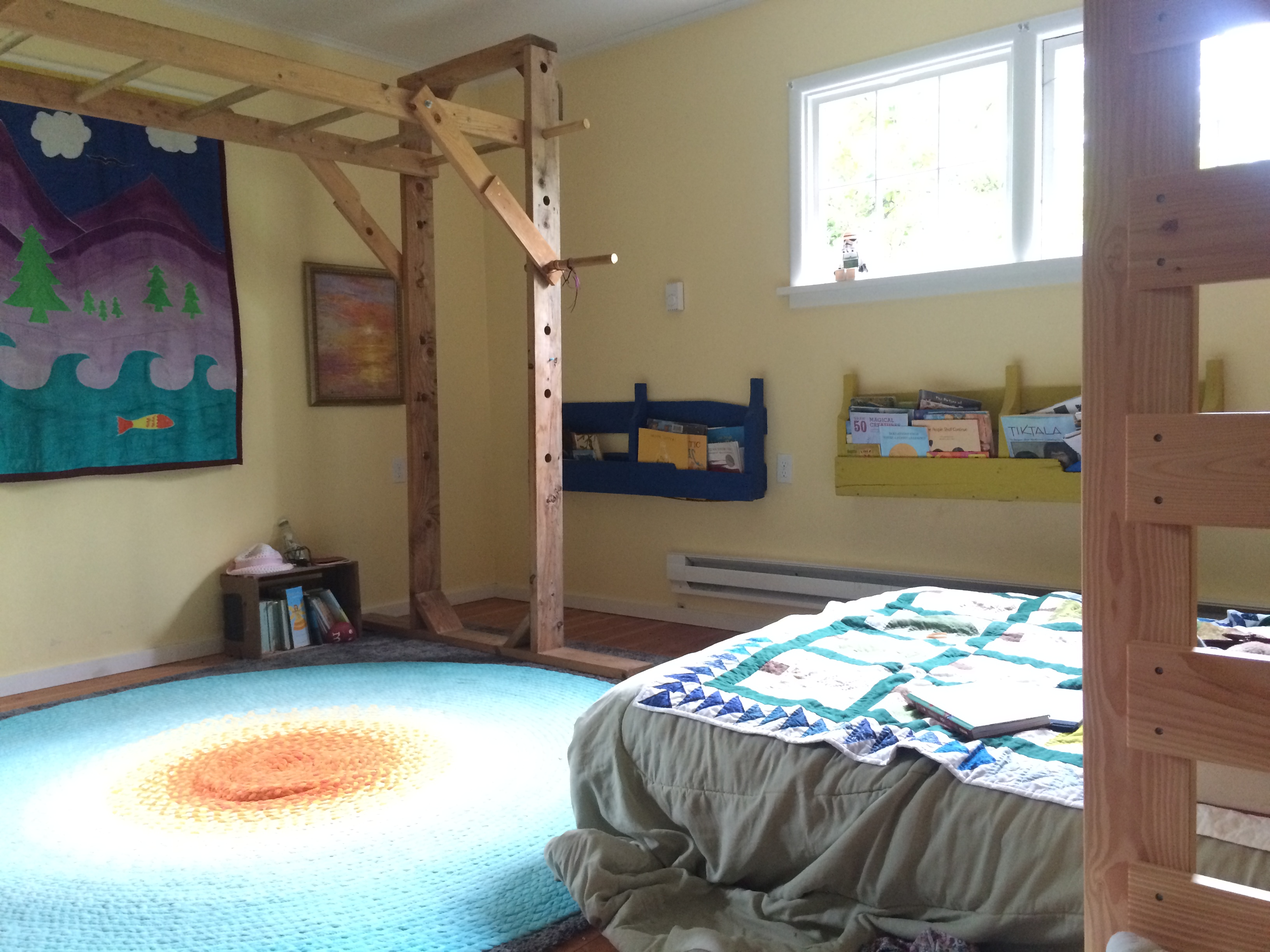I’ve written about and done many interviews on how I’ve shaped my home for more movement and greater physical resilience. You can read about the whys and hows of it, as well as those interviews, in "Why I Went Furniture-Free." What this article addresses is the gear that can be used when developing a “furniture- free,” movement-rich, dynamic living and workspace. Just as with the minimal footwear list I maintain, I’ll likely be updating and expanding this list over time, so please check in now and then.
I typically display my home, which features my personal aesthetic, but you can search #furniturefree on Instagram (or just click on it in this sentence) to see the many ways folks adapt the principles of dynamic living spaces into their lives and varying circumstances. Also keep in mind that I transitioned my house over almost a decade. In many cases you don't have to think about adding items, or worry about cost. I've created my home mostly by eliminating extra items. With a few exceptions of recent decorative items, the features I've added have been used, inexpensive, or both.
Note, these are not affiliate links, they’re just companies that make stuff I’ve used or heard about from others as we make a transition to stacking more movement back into the non-moving spaces in our lives! If you have any suggestions about other products or companies, please email them to us at help@nutritiousmovement.com.
Bedroom/Sleeping Space
Low platform bed: We built our own, and many futon frames are lower than traditional beds, i.e., you get more movement and build strength just getting into and out of bed.
Sleep Surfaces: We’ve slept on everything from firmer and firmer mattresses to futon pads. And our transition is not only about the movement—we wanted to be able to sleep on items that didn’t have plastic or nylon fibers, or the government-required dousing of flame retardants which are now found stored in the bodies of many animals, including our local PNW and BC orca whales. Futons aren’t required to have this treatment applied, so for years we used wool (naturally flame-retardant) futons from White Lotus Home (which we chose because they were the closest to us; there are other places that make something similar.
Sheepskins: In the PNW it's extremely damp, so even our beloved wool/cotton pads ended up getting moldy. Turns out we needed to pick our bed up every day! Our time spent living in New Zealand introduced us to sleeping on sheepskins, and this has been the best for our family so far! Our bedding goes (in this order): sheepskin, bottom sheet, top sheet, and comforter. We sourced our sheepskin while in New Zealand, from EcoWool (and we’ve since found another one at a garage sale. Can you believe it? We couldn’t!). Other sources are Green Bow Farm, and Green Mountain Organics. P.S. When we travel, we also do something similar with a comforter on the bottom and again on the top. Wonder what sleeping on the floor is like, why we do it, and how to transition? Read more here.
Bedding rack: We made a rack out of dowels and closet rod brackets to hang our bedding up each day. (and P.S. Hanging our beds gives us an extra room to move in each day!)
Bathroom
Squatty Potty®: Find different styles and sizes, including ones for kids (ours have always used the one we have) and also travel stools. Get it?
DIY Squat Platform: Sure, everybody poops but not everybody can build their own squat platform. Oh, you can? Great! Find DIY instructions here.
Elevate your feet however you can! I’ve found through talking with many that anything that gets your feet up well can work in a pinch. GET IT!? I crack myself up.
Living room
Cushions: There are many shapes and names of various shapes. Here are some terms to search online to find the one(s) that meet your personal height needs and aesthetic: “floor cushions,” “zabuton,” “zafu,” “poufs,” “meditation pillows,” “yoga bolsters.”
Venn Design: These are physio/exercise balls (also a great addition), but upholstered to be considered furniture vs. exercise equipment rolling around in your living room. If the aesthetic of exercise equipment is preventing you from making it an established option as far as furniture for your home or office goes, Venn offers beautiful options.
Low table: Many folks are used to low tables in the living room, so it’s pretty easy to find a low table that works for living room computer work, homework, or eating! All of the tables we've used in the past have come from second hand stores. Ikaria design make beautiful low tables for the office, but also offer this tutorial on how to make one out of a common card table.
Kitchen
Low kitchen table: We’ve used various coffee tables as kitchen tables, and we’ve also cut the legs down on many tables. We’ve also played around with heights for eating, settling on 16 inches/40 cm tall for now. In the end, the height is often predetermined by the height of the furniture we’re modifying, and we can adapt our bodies to that height via bolsters, stools, or cushions. Note this low table info applies to anyplace you'd swap a higher table for a lower one.
Kitchen seating: With a low table, the floor is a good foundation, but to make it comfortable to a variety of body shapes, we keep low stools, stumps, and cushions to sit on.
Blanket for indoor and outdoor picnics: Don’t want to mess with your furniture? NOT A PROBLEM! A blanket works just as well as a living-room picnic table as it does in your yard or green space. Sometimes the simplest changes are also the most magical. NO REALLY! Try a special meal on the ground, and whatever you do, don’t tell people it’s GOOD for them. Focus on the fun and novelty.
Mortar and pestle: Yes, we have a blender and we love it. We also love being able to hand process items (and many times we need to process a single cardamom pod, so a blender/processor wouldn’t work anyway and our spices are so much fresher/closer to their natural potency!).
Hand grinder for coffee: As I said once in an interview, “While it was annoying at first, having to take the extra two minutes to make a cup of coffee, it was also eye-opening. Really? I don’t have time to spend two minutes moving my arms vigorously when I’m a movement teacher? I don’t have two minutes to engage, even partially, in the work of something I consume daily? Now it’s one of my most favorite tasks of the day and I’m much more mindful as I take my first sip.” We found ours used, but you can also order hand grinders new and used online.
Whisk: If you have kids, I highly recommend a kid-size version of a whisk as well. From salad dressings to hand-whipped cream, it is so helpful to have snacktivities for kids!
Good knife: If you’re going to make things like cauliflower “rice” by hand, a good knife really helps. There’s a reason food processors work so well, and it’s not only their speed!
Entertaining and Visitors We actually entertain a lot and adapt our home to others entertained in many ways, including setting up a floor table in the living room, using outside spaces covered, and have even heard stories from other folks who keep a higher table and chairs in the garage for meals with family members of various mobilities. (You can read more about how we accommodate guests in the FAQ section of this page.)
Workspace
There’s a lot of play within this category—if you have a workspace in a traditional office, consider making your home office an entirely different shape, i.e., if you’re in a chair all day, set up a low table (see low table specs above) or a standing space to work at home.
Standing desks: I’ve used so many standing desks in the last 10 years and all of them have been furniture designed to do something else. Go to a thrift store and use your imagination. Can I stand in front of this and have my computer and other necessary items handy? Can I add something to the top of my existing desk that allows me to stand? Don’t want to go this route, there are standing desks and kits aplenty. Here’s a partial list to get your search started: Otthsaw, Xdesk, Sit to Stand by Human Scale.
Floor desks: You can make your own (see “low table” specs above) and also check out Soul Seat’s new floor desks.
Dynamic Seating: Maybe your working surface is fixed at conventional desk height, cushions won’t work, and you’d like some flexible seating! Check out Soul Seat, Venn Design, and any other chair that allows you to sit differently!
Stuff to hang on
These things can be incorporated wherever works for you!
Doorway chin-up bars and freestanding bars: These can go into any doorway you pass through. My suggestion is to put one in the doorway you pass through most often. Another easy tip: Just reach up to the top or side of a doorway as you pass through it! It’s a lower load, but it’s also a great way to move your arms, shoulders, and chest easily throughout the day.
Hanging rings: These are trickier to install, and I suggest talking to a local builder or engineer to choose a strong enough ceiling joist to support them.
Indoor monkey bars: This is probably on of the most popular items in the house, but we designed our own. Here are plans for one for children; talk to or hire a local builder or engineer to make sure you’re meeting safety specs. My sister had hers built right into the hallway; find other inspiring ideas here!
Things to put underfoot to keep you moving even while staying “in place”
Even more things you can use wherever works for you!
River rock foyer: I replaced my entrance way flooring with loose rocks for every-time-you-come-in-or-leave-the-house texture. Here’s a video of me cleaning it!
Rock box: You don’t have to remove your flooring to have an awesome bit of rock underfoot. Take a boot tray or build your own custom box and fill it with loose rocks and pebbles of varying sizes. Especially nice at some kind of workstation, like the sink or counter or by your computer.
Textured mat: There are a lot of these on the market. I recommend searching “reflexology mat,” “pebble mat,” and “foot massage mat” to find one that looks perfect to you.
Lego: I’ve found the best foot-Lego encounters are unplanned. The element of surprise really helps me gauge my reflexes, agility, and ability to manage my swearing habit.
Half foam rollers, Yoga Tune Up® balls, tennis balls, a Topo mat—basically anything to keep underfoot while you’re standing there can get you moving even while in place, from a standing workstation to where you brush your teeth, to where you do the dishes or prep a meal.
Wi-fi
Timer: I file our wi-fi timer under “Digital: Good Use Practices.” Just plug your router into the timer and the timer into the wall, setting the range of time you’d like to have access to the internet. This is a simple home addition that is not only an easy way to cut down on consuming something you’re not even using, it can help you consume your online time in a more mindful way.
Interested in more ways to infuse movement into daily life or want to take a tour of my house as it was a couple years ago? Check out our Move More Without Exercise page!











